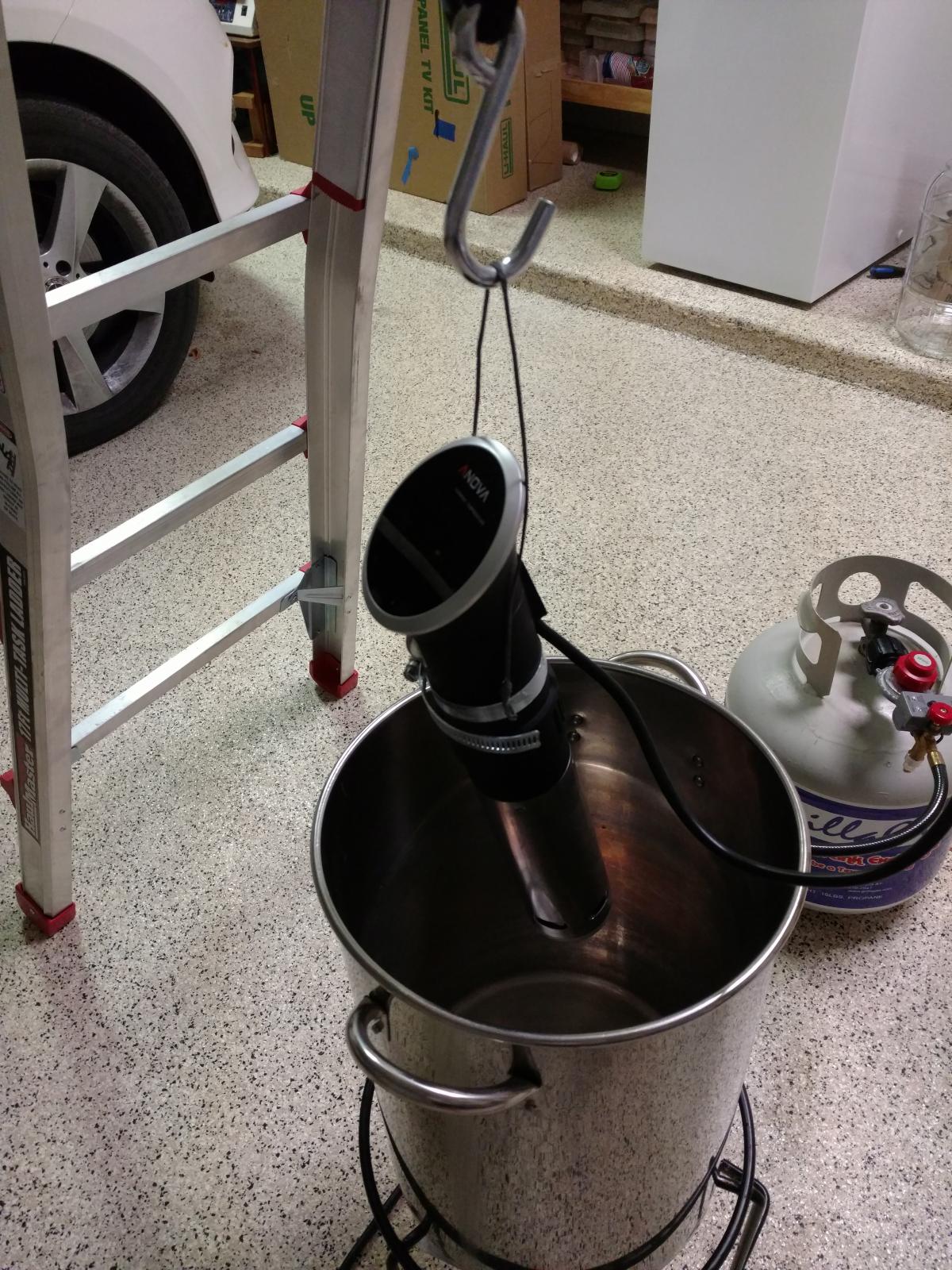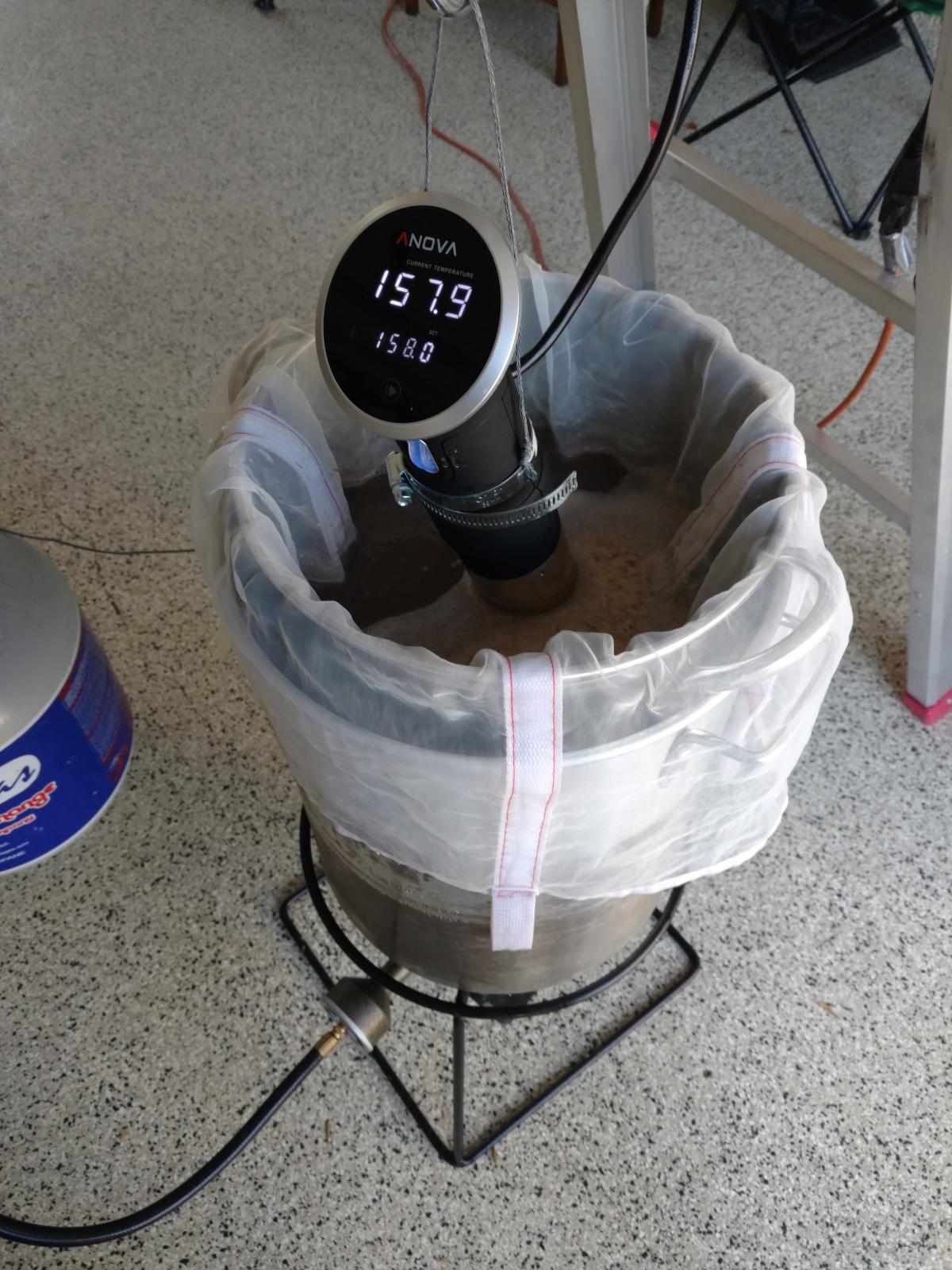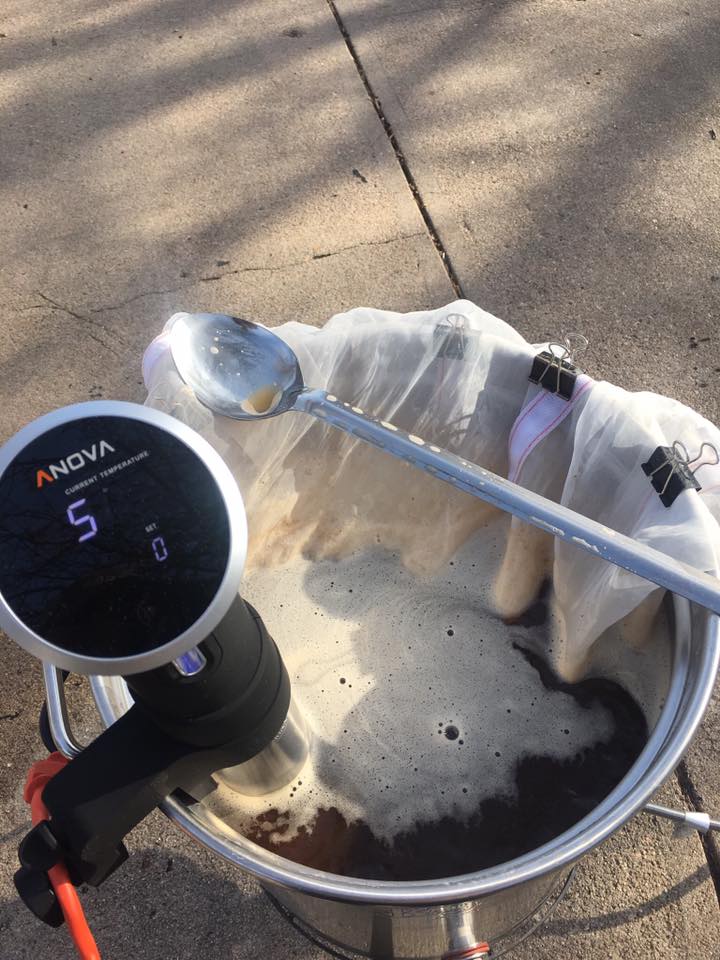After my post above I read a bunch of threads on stirring mash and it seems the main issue people have is with heat loss. Of course, with the sous vide, that isn't a problem. Also, some mentioned that commercial brewery mash tuns have stirring mechanisms. So, I'm definitely giving your method a try.
I have a few issues though:
1. My kettle is tall and the sous vide doesn't reach the liquid. I've been tying it to my kettle handle and lowering it in for whirlpooling, but I guess I need to make a special mount.
2. How do you keep the bag from sucking in to the sous vide?
3. Is it super slow doing a step mash? With the outside cooler method I can just drain some water and add boiling water to quickly get to the next step.
Thanks!
1. Your batch size is just too small. There isn't anything magical about a 5 gallon batch. Just a little calculation and you can easily brew a 6 gallon batch if that is what it takes to reach the liquid.
3. There are several ways to get a faster heating for a step mash. First it to forget about it. Most people cannot tell the difference between a step mash and a single infusion. Second is exterior heating supplement. Third is starting a little short on the mash water and add boiling to bring the temp up part way quickly, then use your sous vide to get the precision you desire. Fourth would be a decoction mash with the sous vide providing the final push to get the precise temp.














![Craft A Brew - Safale BE-256 Yeast - Fermentis - Belgian Ale Dry Yeast - For Belgian & Strong Ales - Ingredients for Home Brewing - Beer Making Supplies - [3 Pack]](https://m.media-amazon.com/images/I/51bcKEwQmWL._SL500_.jpg)













































